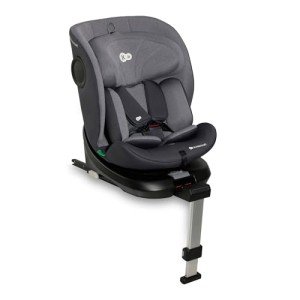10 Healthy Pram Or Pushchair Habits

Pram or Pushchair: A Comprehensive Guide for New Parents
Picking the right mode of transportation for kids is among the first considerable decisions brand-new moms and dads deal with. With Pram Stores Near Me on the marketplace, the argument in between prams and pushchairs can be bewildering. This post will offer comprehensive insights into the differences between prams and pushchairs, their specs, advantages and downsides, and what to consider before purchasing.
Understanding Prams and Pushchairs
At its core, the option between a pram and a pushchair depends on their style and meant usage.
Meanings:
- Pram: A pram, short for "perambulator," is designed mostly for newborns. It features a flat, carrycot-style seat that enables the baby to lie down completely flat. Prams are frequently more glamorous and are intended for transferring babies who are not yet sitting up independently.
- Pushchair: A pushchair, also referred to as a stroller, is developed for older babies and toddlers who can sit up. Pushchairs normally have an upright seat and may not recline totally flat, although numerous designs now offer adjustable reclining choices for comfort.
Secret Differences:
| Feature | Pram | Pushchair |
|---|---|---|
| Age of Use | Newborn to about 6 months | 6 months to 4 years or more |
| Seating Position | Flat, resting | Upright or somewhat reclined |
| Weight | Generally heavier | Typically lighter |
| Portability | Less portable due to weight | More portable and simpler to fold |
| Usage Case | Brief strolls, leisurely strolls | Daily use, errands, longer trips |
Advantages and Disadvantages
Pram
Advantages:
- Comfort for Newborns: Provides a flat surface area favorable to a newborn's developmental needs.
- Stylish Designs: Many prams featured classy designs, providing a touch of luxury.
- Storage Space: Sometimes consist of bigger storage options below.
Downsides:
- Weight: Generally heavier and bulkier than pushchairs.
- Minimal Usage: Suitable only for newborns and infants who can not sit up.
Pushchair
Advantages:
- Versatility: Suitable for older babies and young children, typically accommodating them for a number of years.
- Light-weight and Portable: Easier to fold and transport, making them perfect for busy parents.
- Configurable Options: Many pushchairs have adjustable seats and accessories for cars and truck seats and carrycots.
Disadvantages:
- Comfort for Newborns: Not constantly ideal for infants in the early months without an appropriate insert.
- Less Luxurious: Often viewed as less luxurious compared to prams.
Making the Right Choice
When it concerns deciding in between a pram and pushchair, several aspects must be considered:
1. Lifestyle:
- If moms and dads frequently make long journeys or choose strolls, a pram may be preferential.
- If they require to browse through city streets or take public transportation, a light-weight pushchair might be more appropriate.
2. Spending plan:
Pricing can differ commonly. Understanding your financial limitations will help focus on choices that satisfy both aesthetic and useful criteria.
3. Adaptability:
Some progressive options include travel systems that allow parents to transition from a safety seat to a pushchair with the exact same base, providing maximum flexibility.
4. Storage Space:
A pram might take up more room in a car or in the house, while a pushchair's ability to fold down can be a considerable advantage in tighter areas.
Frequently asked questions
Q1: Can I use a pushchair for newborns?
A1: Some pushchairs feature bassinet accessories or fully reclining seats, making them suitable for newborns. Nevertheless, it's important to examine the specifications before use.
Q2: How do I pick the right model?
A2: Consider your way of life, budget plan, and the features you focus on, such as weight, mobility, and storage alternatives.
Q3: Are prams and pushchairs safe for my baby?
A3: Yes, both prams and pushchairs are designed with security functions. Try to find Best Prams with a 5-point harness, durable brakes, and protected frames.
Q4: How long can I use a pram for?
A4: A pram is normally appropriate till a baby can sit up unassisted, usually around 6 months.
Q5: What are travel systems?
A5: Travel systems are mixes of a safety seat and a pushchair that work in tandem, enabling simple shifts from automobile to pushchair without needing to get rid of the baby.
Choosing between a pram and a pushchair ultimately comes down to the requirements and way of life choices of each family. Prams provide convenience and style for babies, while pushchairs offer versatility and ease for older babies and toddlers. By thoroughly considering individual scenarios and requirements, parents can make an informed option that will guarantee safe and enjoyable getaways with their little ones.
In the end, whether one select a stylish pram or a practical pushchair, the primary objective remains the exact same-- making sure convenience and safety for the child while facilitating benefit for moms and dads.

